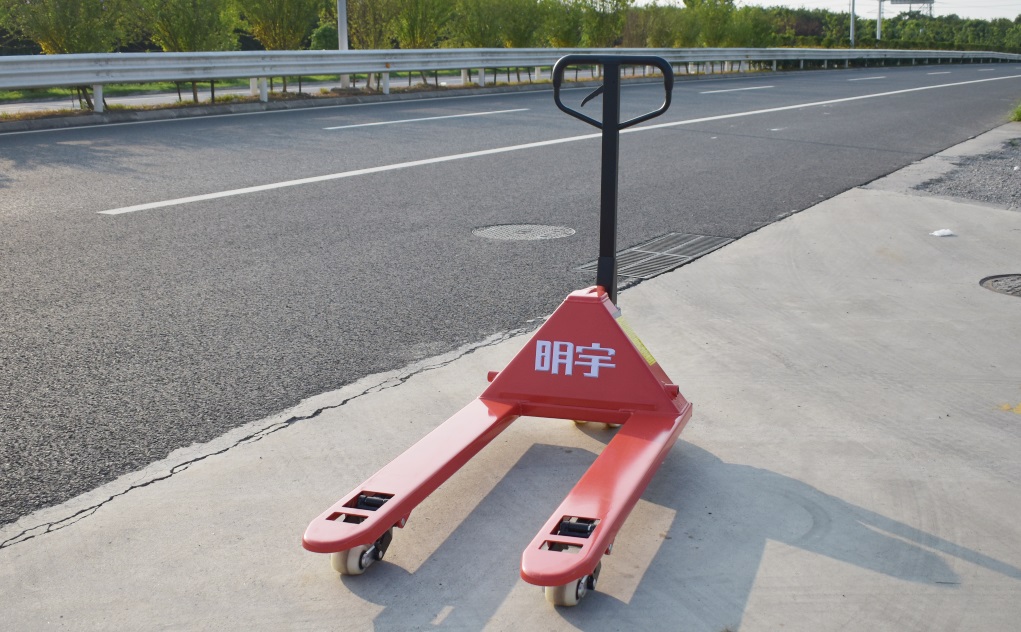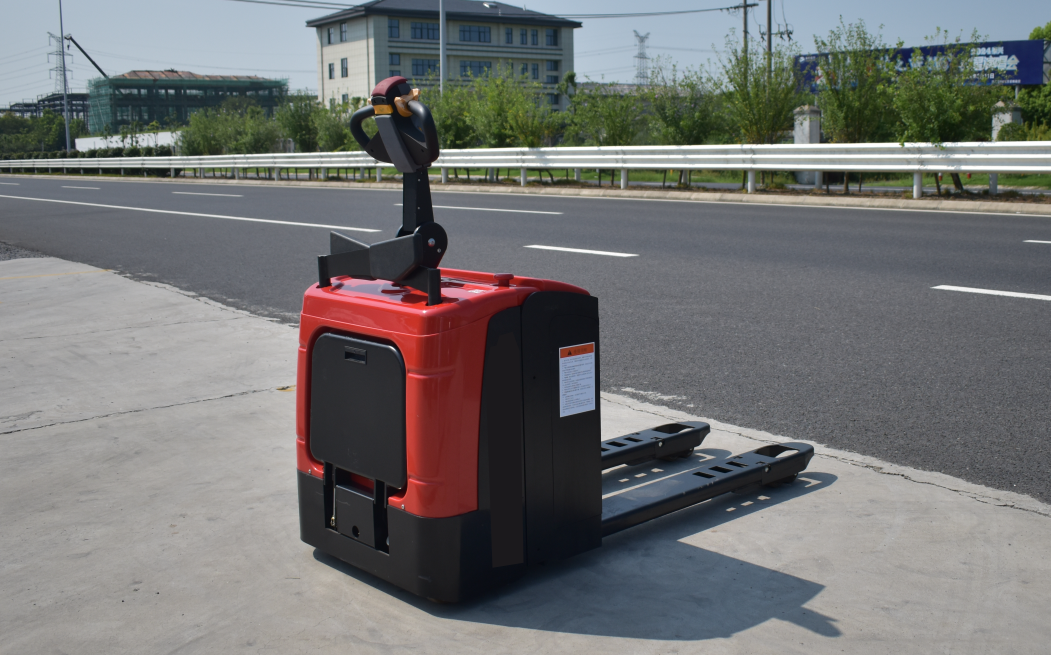ntroduction
A pallet truck, also known as a pallet jack or pump truck, is a versatile material handling equipment used to transport pallets efficiently. It has revolutionized warehouse and logistics operations by significantly reducing manual labor and improving productivity.
The history of pallet trucks can be traced back to the early 20th century. Early models were manually operated and required significant physical effort to lift and transport heavy loads. Over the years, technological advancements have led to the development of more efficient and ergonomic pallet trucks, including electric and motorized models.
Pallet trucks are essential in various industries, including manufacturing, warehousing, retail, and logistics. They are used to transport goods within warehouses, load and unload trucks, and move materials between different work areas.
The Basic Components of a Pallet Truck
A typical pallet truck consists of the following key components:
- The Fork: The fork is a pair of horizontal prongs that slide under the pallet to lift it. It is usually made of durable steel and designed to withstand heavy loads.
- The Pump Handle: The pump handle is used to manually operate the hydraulic system. By pumping the handle, the operator generates the hydraulic pressure needed to lift the pallet.
- The Hydraulic System: The hydraulic system is the heart of the pallet truck. It consists of a pump, a cylinder, and hoses. The pump generates hydraulic pressure, which is transmitted to the cylinder. The cylinder, in turn, pushes the forks upward, lifting the pallet.
- The Wheels: The wheels provide mobility to the pallet truck. They are typically made of polyurethane or nylon, which offers good traction and durability.
Types of Pallet Trucks
- Manual Pallet Trucks: These are the most basic type of pallet truck, operated by manually pumping a handle to lift the forks.
- Electric Pallet Trucks: These trucks are powered by electric motors, making them easier to operate and more efficient for heavy-duty applications.
- Pallet Stackers: These are specialized pallet trucks designed for stacking pallets to multiple levels. They have a taller mast and a higher lift capacity.
How a Pallet Truck Works: A Step-by-Step Guide

How a Manual Pallet Truck Works
-
Lifting the Pallet:
- Engaging the Pump Handle: The operator pumps the handle, which activates a hydraulic pump.
- Hydraulic Fluid Flow and Pressure: The pump generates pressure, forcing hydraulic fluid into a cylinder.
- Fork Elevation: The pressurized fluid pushes a piston within the cylinder, which in turn lifts the forks and the pallet.
-
Transporting the Loaded Pallet:
- Maneuvering the Truck: The operator tilts the handle to steer the truck in the desired direction.
- Wheel Design and Steering: The truck's wheels, often caster wheels at the front and rigid wheels at the back, provide maneuverability.
- Overcoming Obstacles: The operator can tilt the handle to lift the front wheels, allowing the truck to navigate over uneven surfaces or ramps.
-
Lowering the Pallet:
- Releasing the Pump Handle: The operator releases the pump handle, reducing the pressure in the hydraulic system.
- Hydraulic Fluid Return: The hydraulic fluid flows back to the reservoir, allowing the piston to retract.
- Fork Descent: As the piston retracts, the forks and the pallet descend to the ground.

How an Electric Pallet Truck Works
-
Lifting the Pallet:
- Activating the Lift Button: The operator presses a button on the handle to activate the electric motor.
- Motor Power: The motor drives a hydraulic pump, which generates pressure in the hydraulic system.
- Fork Elevation: The pressurized fluid lifts the forks and the pallet.
-
Transporting the Loaded Pallet:
- Steering: The operator uses a tiller handle to steer the truck.
- Electric Motor Power: The electric motor powers the drive wheels, allowing for smooth and efficient movement.
- Speed Control: The operator can adjust the speed of the truck using a speed control lever.
-
Lowering the Pallet:
- Activating the Lower Button: The operator presses a button to activate the lowering mechanism.
- Hydraulic Fluid Return: The hydraulic fluid flows back to the reservoir, allowing the piston to retract.
- Fork Descent: As the piston retracts, the forks and the pallet descend to the ground.
How a Pallet Stacker Works
Pallet stackers are a specialized type of pallet truck designed for stacking pallets to multiple levels. They work similarly to electric pallet trucks but have a higher lift capacity and a taller mast.
-
Lifting the Pallet:
- Activating the Lift Button: The operator presses a button to activate the electric motor.
- Motor Power: The motor drives a hydraulic pump, which generates pressure in the hydraulic system.
- Mast Elevation: The pressurized fluid lifts the mast and the forks, elevating the pallet to the desired height.
-
Transporting the Loaded Pallet:
- Steering: The operator uses a tiller handle to steer the stacker.
- Electric Motor Power: The electric motor powers the drive wheels.
-
Lowering the Pallet:
- Activating the Lower Button: The operator presses a button to activate the lowering mechanism.
- Hydraulic Fluid Return: The hydraulic fluid flows back to the reservoir, allowing the piston to retract.
- Mast Descent: The mast and the forks descend, lowering the pallet.
Safety Considerations When Using a Pallet Truck
- Proper Lifting Techniques: Always lift loads smoothly and avoid jerky movements.
- Load Capacity Limits: Never exceed the maximum load capacity of the pallet truck.
- Floor Conditions: Ensure that the floor surface is clean, dry, and level to prevent accidents.
- Maintenance and Inspection: Regularly inspect the pallet truck for any signs of wear and tear.
Pallet trucks have become indispensable tools in modern warehouses and logistics facilities. By understanding the basic principles of how they work, operators can use them safely and efficiently. Regular maintenance and proper usage are essential to ensure the longevity and performance of these valuable machines. As technology continues to advance, we can expect to see even more innovative and efficient pallet truck designs in the future.
Post time:Nov.14.2024

